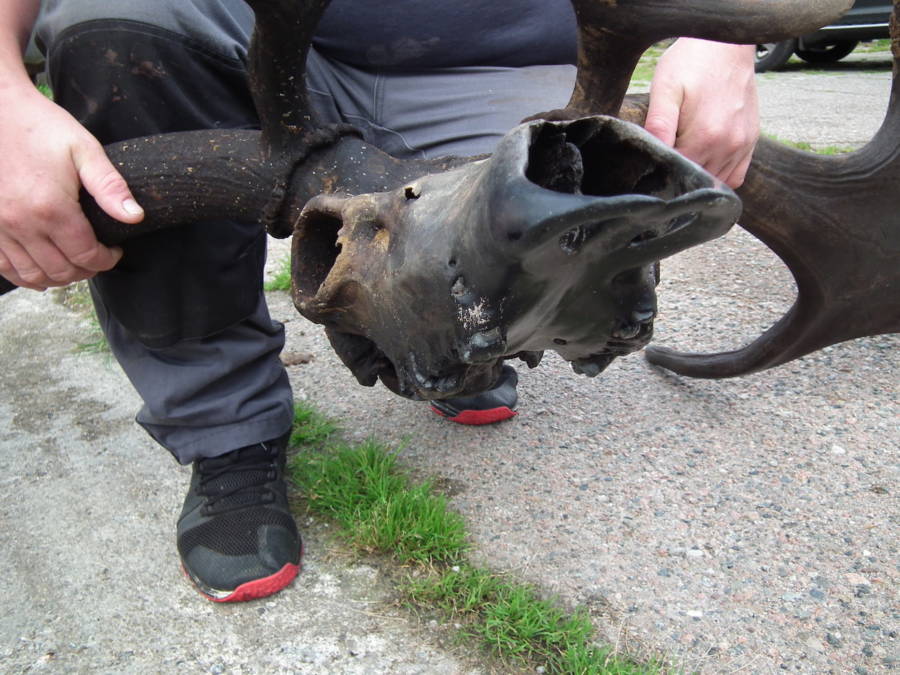Fishermen Discover A Massive 10,000-Year-Old “Irish Elk” Skull

Raymond McElroy is pictured with the antlers and skull of an Irish elk, discovered in his net while fishing on Lough Neagh lake in Northern Ireland.
Though the ancient species is not native to Ireland, more remains of these deer have been found here than anywhere else in the world.
A fisherman and his assistant were out on the lakebed of Lough Neagh in Northern Ireland on Sept. 5 when they reeled in the farthest thing from their usual catch.
Raymond McElroy and his assistant, Charlie Coyle, were shocked when they hooked a massive pair of elk antlers with its skull almost fully intact. As it turns out, their catch was not only unexpected but historic, as the ancient skull dates back over 10,500 years, according to LiveScience.
The two men were fishing just about a half mile from shore, where the waters are no more than about 20 feet, deep when they discovered the elk skull.
“I thought it was the devil himself. I was going to throw it back in,” Coyle told The Irish Times.

A closeup of the Irish elk skull with its jaw missing but antlers fully intact.
The skull and antlers once belonged to a now extinct ancient species known as the “Irish elk” (Megaloceros giganteus). The skull and antlers measure about 6 feet (or 1.8 meters) long, which gives a sense of just how large these creatures were when they once roamed the earth.
Indeed, Irish elks were one of the largest species of deer to ever exist and they’ve been extinct for nearly 10,000 years.
The name “Irish elk” is a misleading one, however, as these creatures are neither elks nor native to Ireland. These massive animals are technically categorized as deer and could be found all across Europe, Asia, and northern Africa.
Their “Irish elk” name comes from the fact that the remains of these creatures are most commonly found in the lakes and bogs of Ireland — more often than in other parts of the world.

Lough Neagh in northern Ireland, where McElroy and Coyle discovered their Irish elk skull on Sept. 5.
According to Mike Simms, a paleontologist at the Ulster Museum in Belfast, these deer were once able to live in the Irish grass plains when the weather and environment suited them.
But when forests began to grow, their massive antlers didn’t allow them to navigate as easily as they did when the roamed the open plains. Simms said that “giant antlers aren’t great in the forest,” and ultimately, “Environmental change is what caused their extinction.”
There have been other Irish elk remains found at this same lake. In 2014, another fisherman named Martin Kelly found a lower jawbone from an Irish elk at Lough Neagh lake that was estimated to be about 14,000 years old — not far from the same spot where McElroy and Coyle found their Irish elk skull.
McElroy believes that the lower jawbone actually might match with the elk skull he just discovered, although experts haven’t yet confirmed or investigated this theory.
No comments: